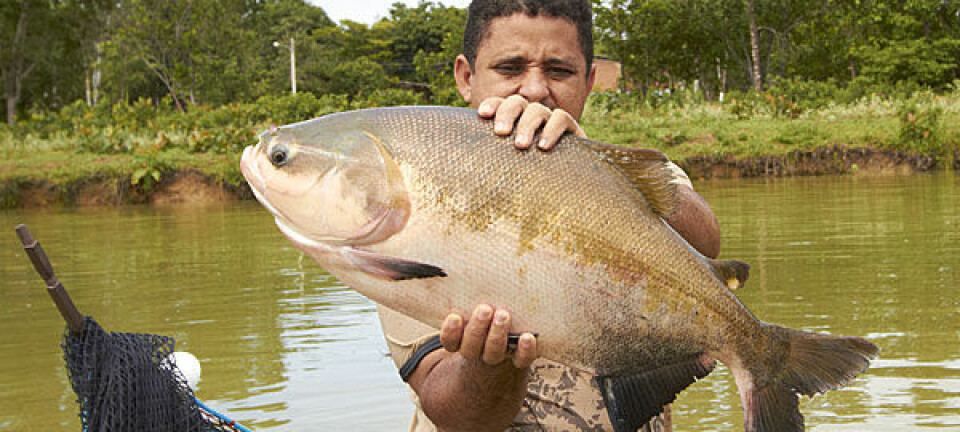An article from Norwegian SciTech News at NTNU
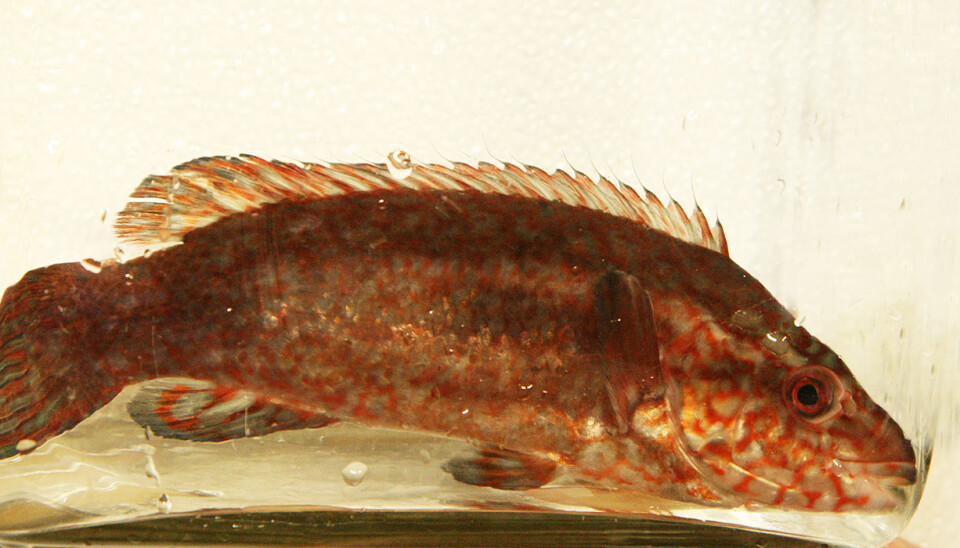
New weapons in the battle against salmon lice
The best weapon in the battle against salmon lice in the Norwegian aquaculture industry has proved to be the use of what are called “cleaner fish”, fish that eat salmon lice. But these fish often die during breeding. Now, researchers have found a way to help the young fish survive.
Denne artikkelen er over ti år gammel og kan inneholde utdatert informasjon.
The correct cocktail of bacteria, and better feed for young fish are important weapons in the battle against salmon lice.
Salmon lice are currently one of the most pressing challenges in the salmon farming industry, which is one of the largest industries in Norway. Use of pesticides that target salmon lice in food and water has made the lice resistant to some of the chemicals. For this reason, the best weapon is biological, via the use of fish that eat the lice and thereby cleanse salmon farms of the little parasites.
Ballan wrasse is a fish that is widely used by the salmon farming industry as a “cleaner fish”. The wrasse thoroughly inspect infected salmon, helping themselves to any lice that they find. A win-win situation, in other words. Almost.
Transport is stressful
You may have seen fishing net buoys placed close to shore, right near the seaweed belt, and wondered what is being fished for in such shallow water. These are nets for collecting live wrasse. Currently, catching and moving wild wrasse is the most common way of bringing cleaner fish to salmon farms. But this is by no means a problem-free solution.
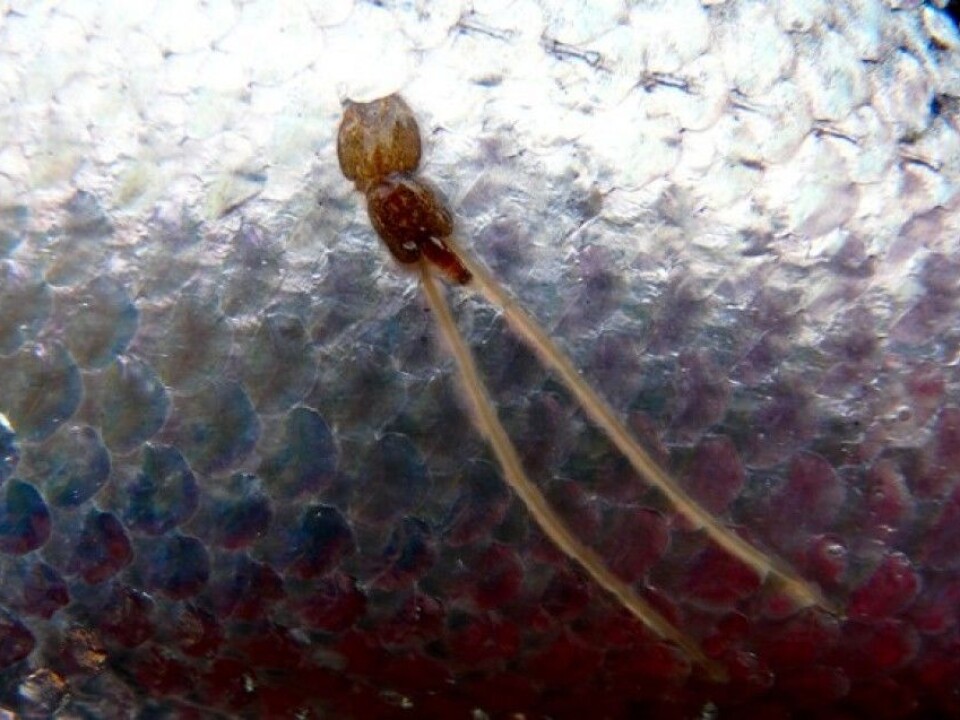
“The fish are often transported long distances, and released into the ocean far away from where they were caught. This means that there is risk of transmitting diseases from place to place,” says Professor Elin Kjørsvik of the Department of Biology at NTNU. She is also the academic leader for the NTNU Centre of Fisheries and Aquaculture.
“Transport is also very stressful for the fish. It isn’t a good way to treat animals, and many of the fish die while being transported,” she adds. “The species and sizes of fish that are caught are also quite random, which means that fish farmers don’t always get the fish that they need.”
For these reasons, researchers are now trying to successfully breed wrasse. This is a much more sustainable solution, but not without its own problems.
Tiny and vulnerable
“The problem with breeding is keeping fish fry alive,” Kari Attramadal, a postdoc at the Department of Biology explains. “Salt water fish larvae are tiny and vulnerable when they hatch and leave the protective environment if the egg for the first time.”
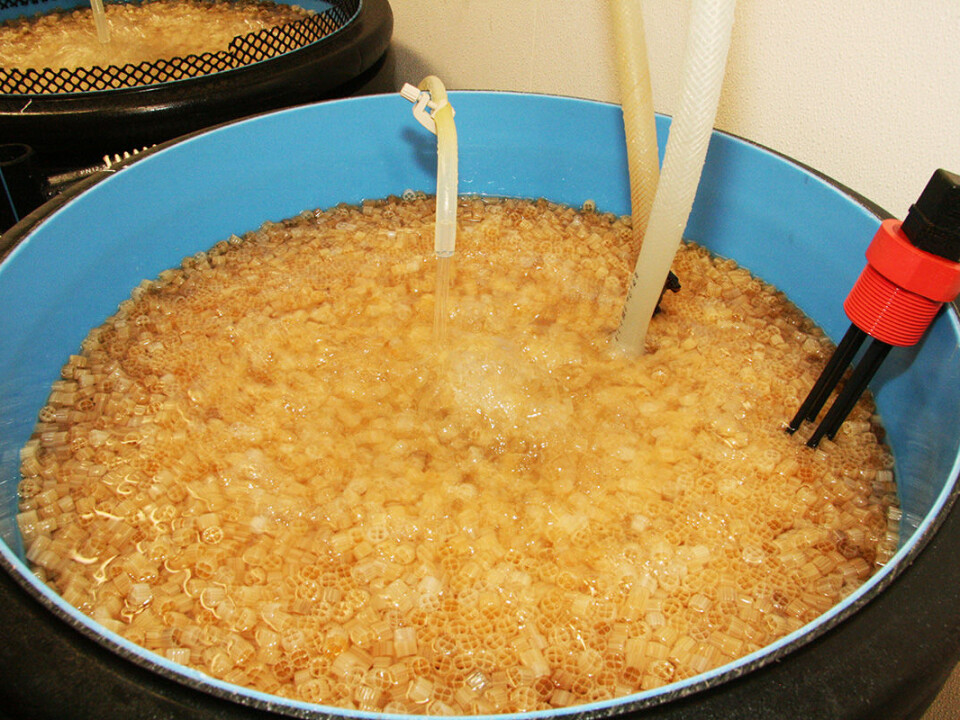
“Wrasse larvae are very underdeveloped when the hatch, they are more or less still foetuses,” says Kjørsvik.
Fish fry that hatch in fresh water, such as salmon, are much stronger and more robust, ready to start on the dangerous journey outside the egg.
A mouthful of bacteria
For wrasse, the transition from the relatively sterile environment of the egg out into open water is huge. The fish larvae quickly encounter a multitude of bacteria.
“When the eggs hatch and the fish larvae come in contact with water, they are colonized by bacteria. Because of this, the environment that the fish larvae is in when it first opens its mouth is essential to its strength and chances of survival,” Attramadal explains.

The intestinal flora is just as important in these larvae as it is in humans, and researchers estimate that the immune system in wrasse larvae isn’t fully developed until about three months.
Two essential factors ensure that the larvae have a good start to their lives: feed and water quality. And this is precisely what researchers at NTNU and SINTEF are studying.
Making the right cocktail
Bacteria in the tanks used to raise small fish tend to be much more abundant than in the natural environment of the ocean. Disinfecting and cleaning the water in these tanks is therefore important. But by doing this, the natural bacterial flora dies, which allows for other, more aggressive and opportunistic bacteria to spread. These bacteria are the ones that the fish larvae are most vulnerable to.
To prevent invasion by these opportunistic, bad bacteria, the environment in the tanks has to be such that the good bacteria are allowed to flourish. Researchers are using artificial selection to make the aggressive, bad bacteria give way to the good ones.
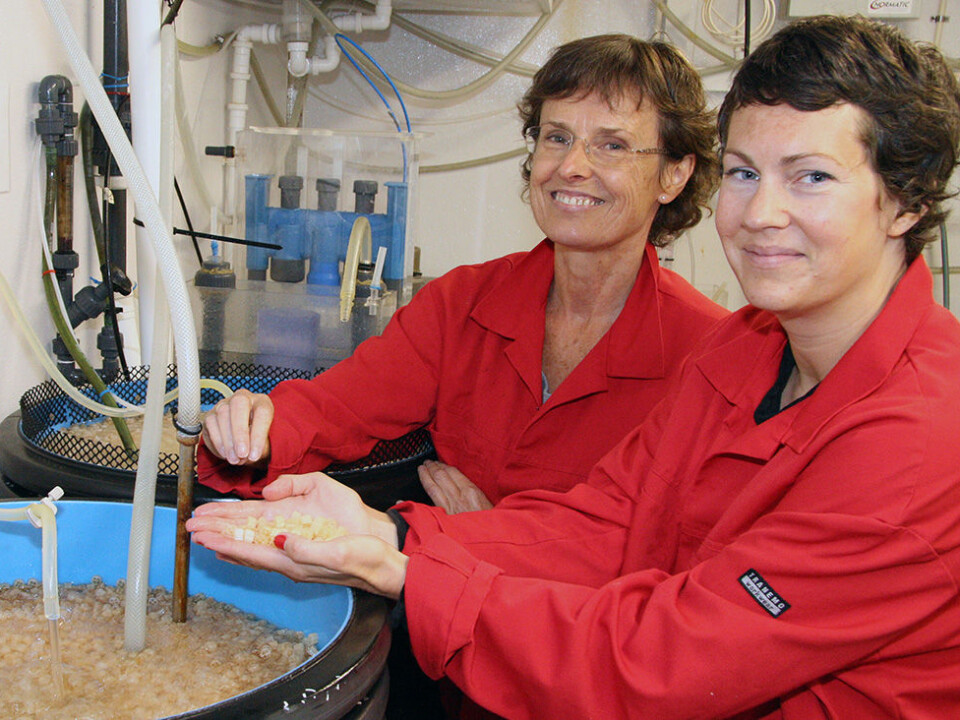
“The solution is to create a stable environment. We do this by adding a bio-filter to the system that contains good bacteria that are well adapted to the environment. These bacteria will fill up the environment so that the bad bacteria don’t have any way to spread,” Kjørsvik says.
The fish larvae need to be protected against bacteria that could potentially harm them, but they need to be exposed to certain bacteria to be able to develop their immune system.
“We have tried to figure out what bacterial flora is best for the young fish to be exposed to, to find the right cocktail,” Attramadal says.
“The way the water is treated makes a huge difference when it comes to survival. The survival rates in environments where we’ve used artificial selection are much higher— the difference was even greater than we’d anticipated,” she concluded.
The feed works miracles
The other fundamental element that researchers have taken into consideration is the food that the young fish are fed.
“Early development is incredibly important in fish, just like in humans. Even in the first week after hatching, we can see the impacts that food has. This is especially true in the case of small, marine fish larvae, where many organs and tissues are developed after they begin eating. It is very important to ensure good growth right from the start. For this, you need the right building blocks,” Kjørsvik says.
Small salt water fish larvae like this can’t eat dry food, they need to eat live prey, which are easier to digest. There are two species that are used as food for young farmed marine fish: rotifers and Artemia salina, a species of brine shrimp.
There are, however, other organisms that more closely resemble the natural food sources of these fish, namely copepods.
Researchers have observed that giving wrasse larvae access to copepods during early development practically works miracles.
“Previously, it has been difficult to produce copepods on a large scale, however. But now, we have a found a method to make this possible, which is a fantastic breakthrough when it comes to raising marine fish on the the whole,” Kjørsvik says.
Great results
“When the fish larvae are given the correct food and are raised in the proper water quality, the results are great. The young fish develop much better, and have higher growth and survival rates. They are better at swimming and catching prey, have quicker bone development, and are less likely to develop mutations. They also handle stress much better,” Kjørsvik said. “If we can raise robust fish, maybe we can train them to be even more interested in eating salmon lice. Fish can actually be stimulated to learn. If we can do this, we will have effective, happy working fish.”
Many fish farmers have also shown interest in using lumpsuckers as cleaning fish.
“Lumpsuckers could potentially be used as the next cleaner fish in the salmon farming industry. They are more at home in the cold temperatures usually found along the coast. But as with every other fish that are bred for the first time, there are many unknown factors that may cause problems. We know very little about early lumpsucker development. One of the greatest challenges in breeding is a period of high mortality at about 2-3 months,” says Kjørsvik.
This is what the two researchers want to study in their next project.
Research-based teaching
The research on ballan wrasse at NTNU and SINTEF was a big part of the research project “Production of Ballan Wrasse”, which was undertaken with the Institute of Marine Research, Nofima, and Nifes. The project was funded by the Norwegian Seafood Research Fund (FHF).
“This type of research is a good example of the university’s role in bringing socially relevant expertise into education through research-based teaching. A total of 16 master’s students have written their theses at NTNU in connection with this three-year research project. Most of them are now working in the fish farming industry, or are continuing their research,” Kjørsvik says.
The project has just ended, and several publications are now in the works. A preliminary summary of the results can be found in the book “Production of Ballan Wrasse”, and on the website www.rensefisk.no
Scientific links
- Kari J.K. Attramadal et al.: RAS and microbial maturation as tools for K-selection of microbial communities improve survival in cod larvae. Aquaculture, Volume 432, 20 August 2014 (Abstract)
- Kari J.K. Attramadal et al.: The effects of moderate ozonation or high intensity UV-irradiation on the microbial environment in RAS for marine larvae. Aquaculture Volumes 330–333, 2012, doi:10.1016/j.aquaculture.2011.11.042
- Kari J.K. Attramadal et al.: Recirculation as a possible microbial control strategy in the production of marine larvae. Aquacultural Engineering Volume 46, 2012. doi:10.1016/j.aquaeng.2011.10.003









